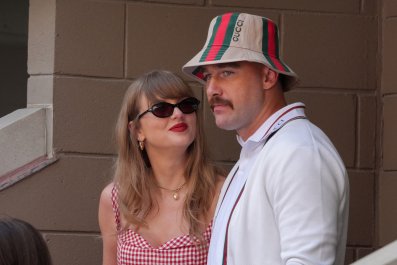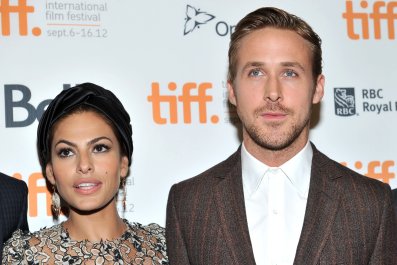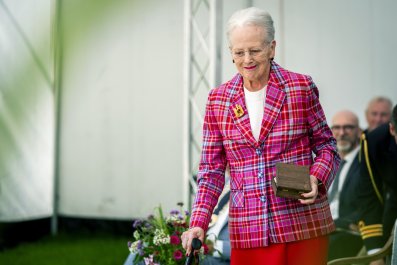They’re dead forever! Wait, they’ve come back to life. Nope, dead again. And suddenly it’s a heyday. No single genre – not even westerns – has gone through as many rounds of extinction then resurrection as the film musical.
As soon as The Jazz Singer (1927) announced the dawn of sound, they became a mainstay of Hollywood entertainment, but were considered old hat by the late 1940s, when production sharply tailed off. Even Disney moved away from the format in the 1950s, before all the studios cashed in on an explosive renaissance in the 1960s, leading to a chaotic glut and an equally abrupt abandonment.
Lately, we’ve been living through a curious if not atypical hot streak for the genre, in which some of its biggest hits – Les Misérables (2012), The Greatest Showman (2017), the remakes of Beauty and the Beast (2017) and The Lion King (2019), Bohemian Rhapsody (2018) – have managed to prolong the musical’s continuing shelf-life, while also being not critically well received at all.
None of those is anywhere good enough to make the cut for our top 25 of all time. Some of Disney’s fresher successes lately, such as Frozen (2013) or Moana (2016), may be conspicuous by their absence – those make our Disney list instead.
We haven’t stuck entirely to Hollywood (there are four outliers), but haven’t gone crazy, either: an alternative list of 25 weirdest musicals could easily be imagined, with the likes of Dancer in the Dark (2000), The Wayward Cloud (2005) and Hedwig and the Angry Inch (2001) thereby honoured. Even so, not every trad classic has a guaranteed spot in this hall of fame.
25. My Fair Lady (George Cukor, 1964)
Let’s face it, Rex Harrison’s Henry Higgins is a pompous ass, and the film would probably be better with a leading lady who could sing. Whether Julie Andrews, who originated Eliza on stage, would have matched Audrey Hepburn’s level of girlish abandon in I Could Have Danced All Night (dubbed by Marni Nixon as she was) – now that’s another question. A bumper hit and Best Picture winner, Cukor’s layered Edwardian trifle goes heavy on the cream, with Cecil Beaton’s hats as the icing on top.
24. Om Shanti Om (Farah Khan, 2007)
Where some Bollywood smashes have dated rather poorly, this romantic fantasy about reincarnation and revenge remains a real keeper. Trailblazing female director Farah Khan created a knowing spoof of the 1970s Hindi film scene, with Shah Rukh Khan majestic as a minor actor whose true love goes off with an arrogant producer. It all comes good with song-and-dance wedding numbers right out of a fairytale.
23. Chicago (Rob Marshall, 2002)
Marshall’s direction may be more competent than strictly inspired, but it’s usually tempting to defend Chicago – one of those Oscar champs that got backlashed by know-it-alls but hit the populist spot. Renée Zellweger and Catherine Zeta-Jones zig and zag as the showgirls on Death Row jostling for a greater share of the spotlight, with Richard Gere as their sleazy lawyer. The trick of cross-cutting fantasy and reality keeps almost every sequence lively, and a few – We Both Reached for the Gun – are really deft.
22. 42nd Street (Lloyd Bacon, 1933)
“Come and meet. Those dancing fee-yee-eet,” sings Ruby Keeler. “On the avenue I’m taking you tooo – Forty-Second Street.” If you can resist this kind of putting-on-a-show number – all foreplay for a grand finale – there’s probably no winning you around to the rest of this list. Competition among chorines, two-timing and starry-eyed ambition, naturally, fire up the plot. There are only five numbers, but they’re crackers – and a peachy Ginger Rogers rules the supporting cast as “Anytime Annie”.
21. West Side Story (Steven Spielberg, 2021)
You’ll find the original at a higher spot, but there’s plenty to be said for Spielberg’s ultra-fluent, purringly confident remake, which tops it in one or two ways – at least everyone’s singing – while falling a smidge shy of genius. Rita Moreno’s Somewhere is a heart-catching moment, transferred to Valentina and nodding to America’s journey since Moreno was Anita. The fights are choreographed with edgy finesse, Gee, Officer Krupke goes off, and it’s updated with a deep, intelligent respect for the source.
20. Once (John Carney, 2007)
Carney has certainly carved out a niche as a maker of unplugged musicals about yearning souls – Sing Street; Begin Again – but it all began here, on the streets of Dublin, when Glen Hansard’s hard-up busker has his money stolen, and a Czech flower-seller (Markéta Irglová) is the only one to take pity. Little known before this, the leads collaborated on a soundtrack that went down in legend, winning the Best Original Song Oscar (for Falling Slowly) and spinning off into an equally stirring stage musical that had long runs on the West End and Broadway.
19. Beauty and the Beast (Gary Trousdale, Kirk Wise, 1991)
Disney surged into its renaissance here with a proud reupholstering of a fairytale, keeping things classical – they’d fool around more on Aladdin (1992) – but with an undercurrent of needed mischief that the music had a lot to do with. Take Howard Ashman’s lyrics on the brilliant Gaston (“I use antlers in all of my decorating!”) and the scullery-maid accent of Angela Lansbury as a singing teapot. From Disney’s animators, it was proof that they were still capable of pulling out all the stops, to produce a work of coffee-table perfection, built to last.
18. All That Jazz (Bob Fosse, 1979)
To rage against the dying of the light – indeed, to die – isn’t usually the stuff of an all-stops-out song-and-dance extravaganza. This was Fosse’s riskiest, most personal achievement – inspired by the manic phase of his career when he was simultaneously trying to direct the Broadway production of Chicago (1975) and edit his film Lenny (1974). As such, there’s as much pill-popping as there is toe-tapping. It adds up to a thrillingly frank summation of Fosse’s life’s work, with Roy Scheider extraordinary in the lead.
17. A Hard Day’s Night (Richard Lester, 1964)
Beatlemania was at its zenith when United Artists had the bright idea to bash out an exploitation quickie in seven weeks, costing peanuts, and to rush out the soundtrack album (hoping to beat Capitol Records to the punch). The songs were plenty good enough; no one really needed the film to be any good at all. But it was, thanks to a witty, Oscar-nominated script by Alun Owen, and the many ideas of Richard Lester in the director’s chair, mimicking all the freewheeling tomfoolery of the French New Wave. It proved a smash that pushed the Fab Four to new heights of fame.
16. Singin’ in the Rain (Gene Kelly, Stanley Donen, 1952)
Many would have it higher, some at number one. Would it be fair to say the dancing is extraordinary – nonpareil – while the songs are… merely good? We can make an exception for the title track and Good Morning. Something about the thrusting quality of Gene Kelly’s expertise – and that shark grin – cuts him out better, perhaps, to be cynical than carefree. But the send-ups of the dawn of sound are contagiously funny – credit Jean Hagen’s squeaky magic in support there. Plus, every inch of Cyd Charisse… Donald O’Connor running up walls… Maybe, it’s not that overrated.
15. A Star is Born (George Cukor, 1954)
For connecting so resplendently with her long-awaited comeback role, and making her talent such an intimate gift shared with an audience, Judy Garland should have scooped her Oscar for this (she lost to Grace Kelly for The Country Girl). Co-starring a searingly bitter James Mason as her alcoholic mentor, Cukor’s is the greatest version of Tinseltown’s favourite rags-to-riches tale, even though WB heavily meddled with it on release, cutting out 27 minutes – including songs – that were later restored.
14. Love Me Tonight (Rouben Mamoulian, 1932)
Maurice Chevalier’s persona might have become icky in his Gigi years, but as an ardently roguish lover he excelled here, in a sublime pre-Code romantic comedy set in fragrant Paris but shot on Paramount’s backlot. The film puts the fluting voice of Jeanette MacDonald to work ideally as a haughty princess, and gets remembered, rightly, for the sequence where Isn’t It Romantic? captivates all who hear it, a refrain caught on the breeze and travelling round the houses.
13. Meet Me in St. Louis (Vincente Minnelli, 1944)
On the surface, Minnelli’s Technicolor classic is all sweetness and light: Judy Garland (again), the Trolley song, lots of dancing and tinsel. What makes this one of the great American musicals is an undertow of despair a mile wide. It’s a nostalgia trip as subtly bitter as it is sugary; and the subtext of Have Yourself a Merry Little Christmas is anything but merry. The way it was originally written, “It may be your last” was meant to be the next lyric to follow. Good grief.
12. Grease (Randal Kleiser, 1978)
Grease may be a fast-food musical, not haute cuisine – but it’s one heck of a quarter-pounder with cheese: authentically American to the core, with pickles and Stockard Channing on the side. The songs, generously showcased, are so damn good, getting off to a flyer with Summer Nights, before the film tries out a tornado of tones from Hopelessly Devoted to You via Greased Lightnin’ to the immortal You’re the One That I Want. The leads give it a damn hard sell, convincing us their summer might last forever.
11. The Sound of Music (Robert Wise, 1965)
Both “devastatingly well-made” and “schmaltz as Olympus”, argued the musicals expert Richard Barrios in his book Dangerous Rhythm – both assessments that are almost equally hard to dispute. Many won’t hear a word said against it, even so. It was a sensationally important hit, with a score that’s almost offensively sing-along-able. If you don’t declare undying love for the von Trapps, there are people out there who might dispute your right to compile a list of musicals at all. So here it is: just outside the top 10.
10. South Park: Bigger, Longer and Uncut (Matt Parker and Trey Stone, 1999)
The single funniest thing I’ve ever seen might be Cartman’s song Kyle’s Mom’s a B–tch, whose subject waddles on behind the oblivious soloist, witnessing a rallentando climax as, all jazz hands, he opens his mouth in a transfixed crooner-gasm. What Parker and Stone accomplished with composer-lyricist Marc Shaiman qualifies this as – yes – a better musical than any film previously in the list, with the fantastic songs connecting to a dizzying plot about the politics of offence, mothers taking on the nation of Canada, and Satan having his way with Saddam.
9. Gold Diggers of 1933 (Mervyn LeRoy, 1933)
There are only four songs, but they’re incredible: one is We’re in the Money, with Ginger Rogers and other scantily clad showgirls getting the last naughty romp they’d enjoy before the Hays Code. A show must be put on, of course, with Dick Powell’s down-at-heel composer tearing up drafts before he lands on a doozy: the indelible, Busby-Berkeley-choreographed Remember My Forgotten Man, which reaches outside the film’s little world to embrace the WWI veterans tossed on society’s heap.
8. The Wizard of Oz (Victor Fleming, 1939)
In a one-octave leap, from the middle C of “Some…” to the high C of “...where”, we’re transported from the Kansas dustbowl, over the rainbow, to Technicolor Oz, and what a giddy ride it is. We’re Off to See the Wizard might be the greatest road-trip anthem of all time. While the film could even have handled more songs, the ones we get between Dorothy and her new chums are obviously sublime. Judy Garland – the queen of this list with three entries – does a spectacular job animating them.
7. Fiddler on the Roof (Norman Jewison, 1971)
A string of flops in the late 1960s (Doctor Dolittle, Star!, Hello, Dolly!) sent the “roadshow” format for studio blockbusters – long and lavish screenings, with an intermission, at select premium sites – into suddenly rapid decline. This was the last gasp – but what a gasp. The record-breaking Broadway hit about life in a shtetl comes off with an immense generosity of spirit on screen (and a three-hour runtime, though it flies by). Topol is the epitome of bearish charm as the milkman, Tevye, who needs to marry off his five daughters while forces of persecution and poverty press down on them all.
6. The Jungle Book (Wolfgang Reitherman, 1967)
This list could be populated with heaps more of Disney’s finest, so we’ve been parsimonious to avoid overlap. But it would be a sorry one without this on it. Pick a song that isn’t sublime. Pick a character who doesn’t get their perfect turn at the mic, whether palling up with Mowgli or wanting to eat him. It only loosely has a story – who needs one? Dropping in on it for ten minutes or sixty, you can get a hit of the animators’ rare inspiration, and composers the Sherman Brothers having an absolute field day.
5. West Side Story (Jerome Robbins, Robert Wise, 1961)
If we judged purely on choreography, or on Rita Moreno, this might come first. There are limitations: neither of the leads seems comfortable, and poor Natalie Wood found herself dubbed (by Marni Nixon) when she couldn’t quite nail her vocals. It’s thrillingly electric, though, in street energy, the exuberance of the ensemble, the bold red-dominated palette, and the melting-pot vision of immigrant hopefulness, tipped into turmoil. America is an especially blazing peak, which the Spielberg version, good as it is, was always going to struggle to surpass.
4. Mary Poppins (Robert Stevenson, 1964)
Pure joy, held in check by sternness. While the song has it that a spoonful of sugar makes the medicine go down, you could argue Stevenson’s film manages the opposite trick: to keep the sentimentality at bay, it needs a wagging finger from Julie Andrews, that bright sense of discipline she brings. Everyone is playing to her tune soon enough. The Sherman brothers backed her up with a soaring songbook – it’s hard to believe it wasn’t a Broadway proposition first, unlike My Fair Lady or The Sound of Music. A high-water mark it remains for Disney films of that era, and Hollywood’s loveliest vision of Edwardian-London-as-playground.
3. Nashville (Robert Altman, 1975)
Of course it’s a musical: a baker’s dozen of songs performed on stage by Ronee Blakley, Henry Gibson, Keith Carradine and Karen Black easily qualify it as such. They’re wonderful, even when (like Gibson’s unctuous For the Sake of the Children), they’re plainly pastiche. Blakley’s step-by-step nervous breakdown at the Opry Belle, as the desperately fragile Barbara Jean, is quite literally a showstopper. Nashville is a musical and more, admittedly – a pageant of American vanity and sadness, Altman’s supreme achievement, and a feast of incredibly specific characterisation. Even the people who don’t sing are warbling inside.
2. Cabaret (Bob Fosse, 1972)
Not just one heck of a musical, for which Kander and Ebb take the eternal plaudits, but a killer transfer which gets exactly the right seedy kick out of it. Despite being a high-end production by ABC/Allied Artists which Fosse begged to make, it never feels too glossy: the stage lights are sickly; the mirrors, which reflect ghouls’ faces back to the performers, are distorting and smeared. Weimar decadence never travelled to Hollywood so convincingly. We know how great the songs all are. But it’s always worth being reminded how utterly Liza Minnelli possesses the role of Sally Bowles. Eight Oscars came along (even if it lost Best Picture to The Godfather). It’s never going away.
1. The Umbrellas of Cherbourg (Jacques Demy, 1964)
Nothing beats the lovesick ache of this, a candied present ripped from our grasp when we’d love it to last forever. It rightly won the Palme d’Or and got five Oscar nominations. Demy and Michel Legrand created something wonderfully pure – there’s not one line of dialogue that isn’t sung. They cast Catherine Deneuve, at the peak of her extraordinary beauty, and somehow matched her with the devastating Nino Castelnuovo. (Not even Elizabeth Taylor and Monty Clift in A Place in the Sun commingle quite this radiantly.) Demy’s later Les Demoiselles de Rochefort (1967) is nearly as glorious in many of the same ways. But the parting of the lovers here by the Algerian War, and the upending of their planned future, is perfection and agony.
Disclaimer: The copyright of this article belongs to the original author. Reposting this article is solely for the purpose of information dissemination and does not constitute any investment advice. If there is any infringement, please contact us immediately. We will make corrections or deletions as necessary. Thank you.




